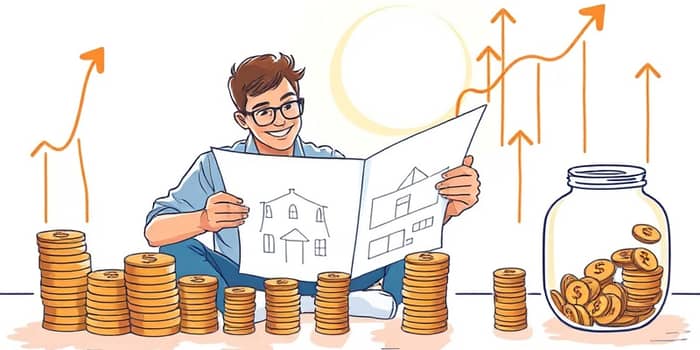
Owning a home is more than just an address—it represents stability, achievement, and a foundation for your family’s future. Yet for many aspiring buyers, the biggest hurdle remains the initial lump sum required to secure a mortgage. With careful planning, disciplined saving, and the right strategy, you can transform your dream into a reality.
In this comprehensive guide, we’ll dive into the numbers, explore various loan options, debunk myths, and equip you with a step-by-step roadmap to build the nest egg you need. Let’s embark on your homeownership journey together.
As of January 2025, the median down payment of $54,310 represents roughly 15% of the median home purchase price in the United States. While many first-time buyers aim low—with a median of first-time buyers at nine percent median down—the repeat market often sees down payments approaching 18–19%.
Regional variation is substantial, too: in some affordable markets buyers may contribute under $20,000, whereas high-cost areas can demand close to $200,000 up front. Surveys reveal that 29% of prospective homeowners plan to put down 10% or less, and a select 7% consider zero-down options.
Choosing the right loan is pivotal, as it dictates your minimum contribution and eligibility parameters. Below is an overview of common loan types and their down payment thresholds.
The long-held belief that you must save 20% before buying is rooted in avoiding private mortgage insurance. Yet most buyers today contribute far less without derailing their plans. While a larger deposit does lower monthly payments and interest rates, you can avoid private mortgage insurance costs with targeted lender programs and once you reach 20% equity through payments or appreciation.
Your credit profile heavily influences both your down payment needs and your interest rate. For conventional loans, a FICO score of at least 620 is typically required. FHA borrowers benefit from lower thresholds—580 for 3.5% down—though dipping lower demands larger deposits.
Although VA and USDA loans lack official minimum scores, lenders often look for a baseline: around 620 for VA and approximately 640 for USDA. Strengthening your credit can help you qualify for better rates and even reduce upfront costs.
Begin by identifying your target home price and the corresponding down payment percentage. For instance, on a $350,000 home, a 15% contribution equates to $52,500, whereas an FHA option at 3.5% requires $12,250 up front.
Next, calculate how long it will take to reach your goal at your current savings rate. If you can set aside $1,000 per month, saving $50,000 takes just over four years; increasing that to $1,500 shortens the journey to under three years.
Don’t overlook local, state, and federal down payment assistance initiatives. These come in the form of grants, forgivable loans, or matched savings accounts tailored for first-time and moderate-income buyers. By tapping these resources, you can bridge the savings gap and move into your new home sooner.
If your deposit falls below 20% on a conventional mortgage, you’ll incur private mortgage insurance fees until you build sufficient equity. While this increases your monthly outlay, PMI can typically be canceled once your unpaid balance dips to 80% of the home’s original value.
Beyond the down payment, budget for additional expenses that range from 2% to 5% of the purchase price:
Closing costs (attorney fees, title insurance, lender fees), an earnest money deposit to show commitment, and inspection/appraisal charges. Factoring these into your savings plan prevents last-minute financing gaps.
With all the pieces in place, map out a timeline that balances ambition with realism. Start by securing a pre-approval to understand your borrowing capacity, then refine your savings targets and program choice. Stay flexible: rising home prices or new assistance programs may shift your strategy, so periodically revisit your plan.
As you approach your target, gather documentation—tax returns, pay stubs, bank statements—to streamline your mortgage application. Partner with a lender experienced in your chosen loan type to ensure smooth sailing toward closing day.
Saving for a down payment is more than a financial exercise—it’s a journey of discipline, sacrifices, and incremental victories. By understanding the numbers, leveraging available programs, and maintaining steady progress, you can cross the threshold into homeownership with confidence and pride. Remember, the path to your front door begins with a single dollar saved today.
References













